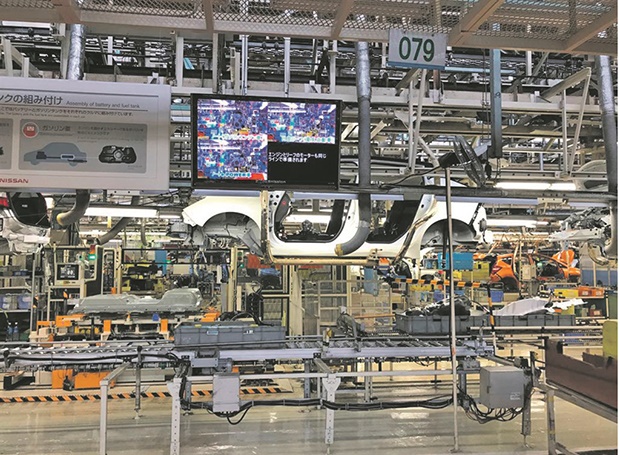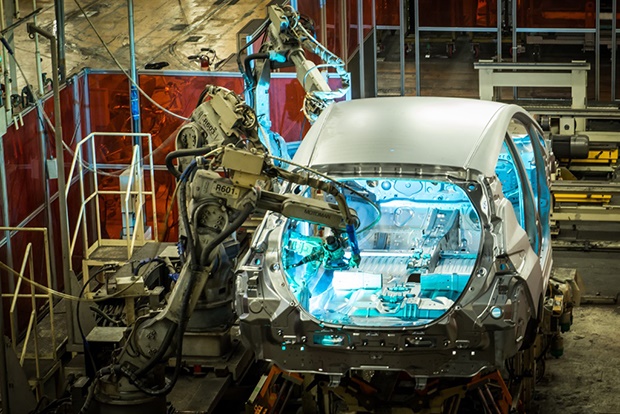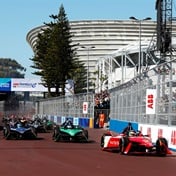
The future of mobility has been here for some time, but the new and improved version is rolling off the production line. Gayle Edmunds visited the state-of-the-art Oppama Plant in Japan as part of the launch of Nissan’s new-generation Leaf electric car to check out what's next.
It is hot. We are all decked out in hard hats and eye goggles. In the midst of a cacophony of mechanical noise, we are told politely – but firmly and often – to stay on the path.
As we walk along, the strident, electronic notes of the first movement of Mozart’s Symphony number 40 in G minor burst out every now and then. The music is to let the few human supervisors know that all is well with the process being undertaken by a selection of the pin-accurate 500 robots in the cavernous factory.
This is Nissan’s state-of-the-art flagship factory, the Oppama Plant in Yokohama, Japan, where the new-generation Nissan Leaf is being assembled. This all-new electric vehicle (EV) is set to appear in Japanese dealerships on October 2. South African EV fans will have to wait until the last part of next year for these cars to hit our shores.
The body shop at the plant is like something out of a Philip K Dick sci-fi novel. Giant robots weld together each vehicle body with 3 000 welds, at a temperature of 12 000°C; sparks fly as the bodies roll by, spending only a minute at each station.
Giant rolls of steel are stamped into about 300 body parts each, which are then welded together by the robots. The robots weld about 10 spots on each body per second – with non-human precision.
The plant has been making cars since 1961, and 13.6 million cars have rolled out of it since then. Of those, just 116 000 are the Leafs, which have been made here since 2011. It is a small number compared with the 77 million vehicles sold worldwide last year.
However, the new Nissan Leaf shows just how fast technology is moving. In six years, the engineers have increased its range from 280km a charge to 400km, without increasing the size of its battery.
Although it is not the biggest range in the world’s EV market, Nissan’s battery technology has progressed to a point where it has upped the density of the energy in the battery to deliver 40% more range.
According to research, the average driver travels about 80km a week, which means the car needs to be charged only once in that time.
One of the stumbling blocks to increasing the EV presence in many markets – ours included – is that the infrastructure is not in place. In Japan – a small country that is home to 130 million people, 13 million of whom live in Tokyo – there are 7 200 quick-charging stations and 28 000 charging stations for electric cars.
In South Africa, EV owners can only charge them at home or at Nissan and BMW dealerships.
Globally, the EV market is growing and Nissan, which pioneered the EV way back in 1947 with the battery-run Tama, believes that the tipping point in the automotive industry is imminent.
Experts predict that, in 2025, buying a gas guzzler or an EV will cost the same, giving consumers a choice that is no longer based solely on their budgets.
Two of our Brics partners – India and China – are moving apace in getting EVs on their roads. China is one of the biggest markets in the world for EVs, and Nissan will soon produce a low-cost EV just for this market.
China’s government gave the technology a big push earlier this year by replacing a taxi fleet with EVs. Predictions were that the Chinese market for EVs would total 600 000 a year by 2020. This year, it hit the 500 000 mark.
In India – where New Delhi’s air quality is so poor, many people have to filter the air coming into their homes or they get sick – the government announced in May that the country was planning to have 100% electric mobility by 2030.
"Electric vehicles will drive the future of our industry"
Increasingly, all brands are dipping into this market, as Daniele Schillaci, Nissan’s executive vice-president of global marketing and sales for Japan, Asia and Oceania, says: “Today, almost every automaker is following our lead. They are now discovering what Nissan has known for a long time – that electric vehicles will drive the future of our industry. I welcome them to the EV game. When they deliver good products to their customers, it makes us all better.”
To date, 300 000 Leafs have been sold around the world. Those cars have driven 3.5 billion kilometres without any critical battery incidents. Goodbye to car services and replacing parts that burn out because of the wear and tear of an old combustion engine.
Increasingly, EVs are not only for planet-loving eco-warriors. The new EVs are also hosting manufacturers’ flagship new technologies, such as Pro-Pilot (semi-autonomous driving) and the e-Pedal (a one-pedal driving system) in Nissan’s case. These technologies are about making our driving experience effortless and safer.
Back at the plant, the robots are given instructions on what to build based on orders received from customers. There are five Nissan models made at the Oppama Plant, the Leaf being one of them.
It bears noting that the Leaf is made on exactly the same production line as the petrol and diesel models – at the point where the fuel tank is installed, the operator installs the battery unit.
The Oppama Plant employs 1 200 people. It has 500 robots in the body shop and 300 other robots doing grunt work in the fitment centre, where 3 000 parts are installed onto the bodies once they have been painted. Called automated guided vehicles (AGV), the robots in this part of the plant collect the parts for each model being built and deliver them to the operators installing those parts. The innovations come from the human operators, who are best placed to know where robots can take over.
The AGVs chug around the facility. Although they are designed to stop if you stand in front of them, they get right of way to keep production going.
Despite the body shop being 100% automated, less than 10% of the final assembly is performed by robots, and each of the 900 cars the plant produces daily takes about 15 hours to complete from start to finish. Once it rolls through the inspection station, where 700 items are inspected on each vehicle, each car is ready to be transported to its new driver.
What about what you and I might drive in the future, when petrol isn’t our only option?
Alfonso Albaisa, senior vice-president of global design, whose job it was to design the new Leaf, said: “We will see futuristic cars when motors move to the wheels, which is the next logical step. The magic carpet is coming.”
Edmunds was hosted by Nissan in Japan for the launch of the Leaf.




 Publications
Publications
 Partners
Partners






















